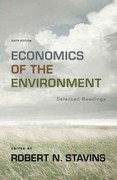This is question 11
11. Consider a small open economy with fixed prices and wages. Consumption de- mand depends positively on disposable income, investment demand depends negatively on the domestic interest rate i. Government spending and taxes are exogenous. Net exports NX are negatively related to income Y and the nominal exchange rate E, where E is the foreign price of domestic currency. The demand for money M/P = L(Y, i) is positively related to income Y and nega- tively related to the interest rate i. The money supply MS is exogenous. Capital mobility is perfect, and balance of payments equilibrium requires i = it, where i* is the foreign interest rate, which is positive to begin with. Throughout this question, the government has a flexible exchange rate policy. (a) [2 marks] Suppose the government wants to boost GDP and first considers increasing the money supply. Analyse the effects of this using the IS-LM-BP diagram. Does monetary policy succeed in raising GDP? (b) [2 marks] After the policy change in part (a), the government considers cut- ting taxes. Analyse the effects of this using the IS-LM-BP diagram. Does fiscal policy succeed in raising GDP? Money demand M/P = L(Y, i) becomes perfectly interest elastic at i = 0. (c) [4 marks] Explain what shape the LM curve takes when i = 0 and sketch the LM curve, considering points where i = 0 as well as those with i > 0. Suppose there is a global recession. Central banks around the world cut interest rates to zero. (d) [2 marks] Analyse the effects of i* falling to zero using the IS-LM-BP diagram. (e) [3 marks] Do your conclusions from part (a) still apply if the government de- cides to increase the money supply? Carefully explain your answer, showing the effects of a larger money supply on the LM curve obtained in part (c). (f) [2 marks] Following on from the money supply increase in part (e), explain whether a tax cut would succeed in boosting GDP. Does your conclusion from part (b) still hold? Now suppose that capital flows depend on the difference between the domes- tic interest rate i and the expected return on foreign bonds adjusted for expected changes in the exchange rate, that is, i* -(AE/E), where AE denotes the expected change in the nominal exchange rate. Capital mobility is perfect, so the BP line remains horizontal, but now has height i* - (AE/E). In external equilibrium, un- covered interest parity (UIP) holds: i = i* - (AE/E). (g) [3 marks] If the government convinced investors that it would pursue policies leading to a depreciation of the value of its currency in the future, what would be the effect on the BP line? Explain what happens to GDP. (h) [2 marks] If both i and i* were expected to remain at zero in the future, would this affect the credibility of the policy from part (9)? Briefly explain







